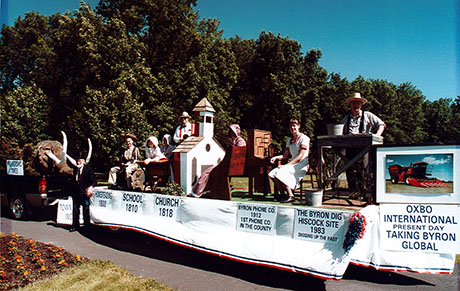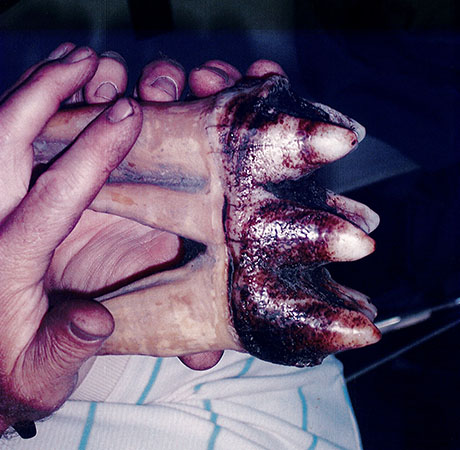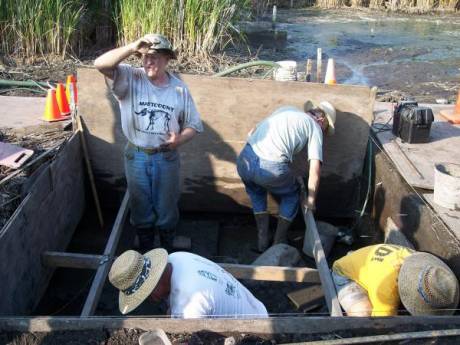
While many college graduates are fleeing the rural life of Genesee County for more hustle and bustle, the Town of Byron has retained generations over the years, Town Clerk Debra Buck-Leaton says.
The secret? Open fields, space between homes, a slower pace and a country lifestyle, she said. Oh, and the feeling that everyone belongs, she said.
Her husband was born and raised there, their 22-year-old daughter lives there and works nearby, and many people have watched their family generations plant roots in Byron.
“There’s a sense of community. People want a piece of property with an acre or two to enjoy time with family; they want to be in their little sanctuary; they want that small town community feel,” she said. “We’re hoping that’s what brings people to Byron, the desire to celebrate with your community members. A lot of people were born and raised their kids here, and their grandchildren live here.”
The celebration of the town’s bicentennial was originally scheduled for 2020. A planning committee began to plan it in January of that year, and the members were caught by surprise.
“None of us expected COVID to be this bad. I had it twice,” Buck-Leaton said, adding how members felt. “Just disappointed. Two hundred years is huge.”
Like it or not, COVID is still making its way into news articles, as groups resume the daylong undertaking they had intended to have two years ago. Buck-Leaton and her core group of about a dozen fellow citizens excitedly began to map out the town’s bicentennial just as COVID hit big time. They thought perhaps they could get it off the ground last year as well, but pandemic restrictions stopped them cold.
This is the year, and they promise a day full of activities, food, fun, informal history lessons, and fireworks. It’s set for August 20 at Firemen’s Park behind Byron Fire Department, Route 262.
Runners and walkers can lace up for a 5K at 8 a.m. while others are casting out lines for a kids fishing derby at Trestle Park. Hungry visitors can enjoy some syrupy pancakes at a Kiwanis breakfast that runs from 7:30 to 10 a.m. at Byron Fire Hall as vendors sell their wares beginning at 7:30 a.m. Walk over to Caswell Road for a parade at 11 a.m., and remember that voting for a garden contest ends at 2 p.m.
A car/truck/tractor show runs all day to 4 p.m. when awards will be announced. Raffle winners will be drawn and announced every hour from 1 p.m. on, and kids’ crafts and games go from 1 to 5:30 p.m. and a magician will perform from noon to 2:30 p.m. A Genesee Country Village presentation runs from 2 to 4 p.m., overlapping with a duck race at 2 p.m.
Looking for some music? Resonance Group is from noon to 1 p.m., Kelly’s Old Timers from 1:15 to 3:15 p.m., Rebels Posse from 4:15 to 6:15 p.m. and Rise Again Rocks caps the entertainment from 7:30 to 9:45 p.m. Bicentennial festivities are to be capped off with fireworks at dusk.
Or how about seeing photos of the town back in the good ol’ days? Did you see the unsightly mastodon tooth? That’s a big part of Byron’s history, Buck-Leaton said. The town is known for its early ancestors, a group of mastodons that roamed the uncivilized fields.
Mastos is for beast and odous for tooth, and the creatures embodied both, according to museum photos and relics found in Byron’s own backyard. Mastodon digs (called Byron Dig at the Hiscock Archeological Site) occurred many times in the small Genesee County town, Buck-Leaton said. The first tusk was found in Spring Creek decades ago, she said. (Previously: History's latest chapter about to close on the 'Byron Dig')

“We are known for our mastodons,” she said. “Buffalo Museum and Science Center used to do a dig every summer. I have a picture of the tooth they found.”
According to town history records, early settlers cleared the land by hand, felling trees and removing sections of forest for basic infrastructure needed by a town with a current population of 2,500 people.
Byron was divided from the town of Bergen on April 4, 1820, and was named for Lord Byron. The town of Byron in the early days was called Byron Center.
Asa Merrill was one of the earliest documented settlers, who wrote in November 1871 that “it is our pride and satisfaction that it is our once strong arms, that have felled the sturdy trees and converted these once dark forest lands into cultivated fields and smiling gardens. That it is us who have beautified and adorned nature here in old Genesee, and that we ourselves, who will leave behind us this Eden of the West, as a rich heritage to our children and after generations.”
That first pioneer of the eastern side of the county brought with him provisions to last a year. Those items included 500 pounds of beef and pork, 100 pounds of flax for clothing, 70 pounds of tallow for candles, household goods, and the Merrill family of Asa, his wife, and their three boys. Mr. Merrill paid $125 for 100 acres of land, and he and his wife remained in North Byron their entire lives. They are buried in North Byron Cemetery.
West Shore Railroad, which ran nearly east and west through the central part of the town, was removed a few years ago. The New York Central Railroad passes through South Byron, with two of its four tracks still operational.
Other Byron bits include:
- The first school was opened by Chester T. Holbrook in 1810.
- Ira Newburg operated the first inn in 1815.
- The first sawmill was owned by William Shepard in 1813.
- The first religious service was conducted by Rev. Royal Phelps, a Presbyterian missionary, in 1809.
- The first church was Baptist and was located at Byron Center in 1810. It was disbanded many years ago.
One day two other items will also be on that list: the creation of a large water district and a solar facility in town.
Buck-Leaton has learned a lot over the years as town clerk, she said, including an appreciation for the area's charm as a rural farming town. Her father was one of the original founders of the ambulance service, and the town is working hard to raise money for a new ambulance with a cash raffle.
"We're trying to raise $200,000. Any community support we can get for that would be great. And we're always looking for volunteers; if not for this event, then for something else," she said. "I hope we have a great turnout, I hope they're excited about the whole day, and I hope people learn a little history about their town."
Click here for the full Bicentennial Schedule.

Top photo: Byron's float during Genesee County's bicentennial parade in 2002; a mastodon tooth discovered at the Hiscock Archeological Site; Dr. Richard Laub (standing), Curator of Geology at the Buffalo Museum of Science on a dig at the Byron site. Photos from Town Clerk Debra Buck-Leaton and the town website.
